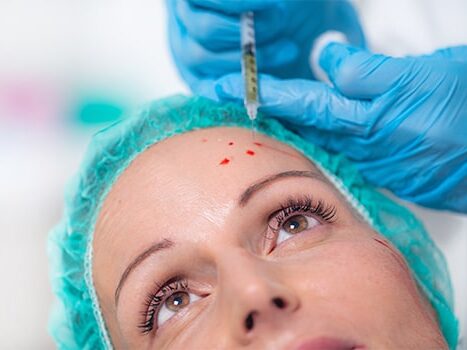PRP treatment is the injection of the existing blood into the tissues that need to be treated as a result of changing the blood in the person’s body with several processes. PRP, which is directly effective in the treatment of many diseases, is also frequently preferred for skin rejuvenation, hair loss and pain treatments. So, what is PRP? How is PRP treatment done? We will now mention all the details about this subject.
What is PRP?
The Turkish equivalent of PRP, called Platelet Rich Plasma, is ‘Trombositten Zengin Plazma’. In the treatments performed with this method, there is no foreign substance transfer to the body as in the stem cell treatment. Again, it is a process that involves injecting the blood taken from the person into the patient as a result of the separation into plasma. Since it is a treatment in which slowed cell regeneration is prevented, treatment is carried out only with blood taken from the patient, without the use of drugs. You can also read our article on Stem Cell Therapy.
What is PRP Treatment?
It is a treatment that involves separating the patient’s blood from the plasma and reinjecting it into the affected area. For this treatment, 10 to 20 ml of blood must be taken from the patient. However, this amount is variable. Other details about the process are as follows:
The blood taken from the patient is centrifuged. The centrifugation process is called the separation process and it is ensured that the blood is separated from their plasma.
After the separation process, the blood put into tubes, will be separated from the plasma. Thus, the structure consisting of red cells in the blood will be separated and a denser blood in terms of platelets will be obtained.
Afterwards, the platelet-rich part is injected into the patient’s area of complaint. Thus, the patient is not supplemented with any external substance.
The main purpose of PRP treatment is to inject blood obtained from the patient’s own blood and made safe by separating it in a special way, to the area of the patient’s body where he or she has complaints.
How is the PRP Application Done?
The application of certain steps is a process related to the evaluation of the effect on the patient after the application. Thus, the most important steps in the process are as follows:
• In the first place, blood is taken from the patient for the necessary controls. However, the amount of blood varies depending on where the PRP will be applied.
• The blood in the patient placed in the centrifuge is separated from its components and a blood suitable for injection emerges.
• With imaging tools such as ultrasound, it is determined exactly where the separated blood will be injected.
• The injection process is performed and after this process it affects the patient in a short time. The reason for this rapid effect is that the blood undergoes a centrifugation process.
The above procedures should be applied and controlled by specialist doctors who are trained and have sufficient experience in this field. It draws attention as a very delicate process.
What Does PRP Do?
PRP is frequently used in non-healing wound treatments, orthopedic treatments, hair loss, treatment of skin disorders and skin rejuvenation processes. It is a very reliable treatment as it provides highly effective results from the treatment of such ailments and no foreign substance injection is performed on the patient. You can also read our article called Skin Rejuvenation.
Skin Spot Treatment with PRP
Skin spot treatments are one of the most preferred areas in PRP application. The formation of spots on the skin occurs with aging over time. However, the main reason is not just aging. Spots are also observed at a young age for different reasons.
These spots or blemishes are mostly acne spots, blackhead spots, sun spots, and birthmarks. Regardless of the reason, it is quite simple to get rid of these spots that appear as a defect in skin beauty. With the application of PRP, it is possible to get rid of the spots or blemishes on the skin within 5-6 sessions.
However, there are spots or blemishes that vary from person to person. Some individuals have small-scale blemishes, while in some individual’s larger spots or blemishes may appear. Therefore, the number of PRP sessions will differ as a result. If the right specialist is worked with serious removal of spot or blemishes is achieved.
Is PRP Stem Cell Therapy?
PRP, which increases the platelet count, is not a stem cell treatment. However, after PRP, fibrin matrixes form on the skin and these fibrin matrixes works with stem cells. For this reason, they are separated from each other. In addition, since it is a very sensitive treatment you should always act on the advice of specialist doctors.


